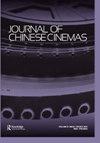The animated worlds of Piercing I, iMirror, and RMB City: Decoding postsocialist reality through virtual spaces
IF 0.4
3区 艺术学
0 FILM, RADIO, TELEVISION
引用次数: 0
Abstract
Abstract Realist aesthetics has dominated critical discussion of postsocialist Chinese cultural production. This paper argues that contemporary Chinese animated media subverts the logic of realism by enacting virtual spaces, and in turn, hosting abject scenarios of socio-economic marginalization and even fantastic illusions of hyper-consumerism. Liu Jian’s (2010) film Piercing I (刺痛我), depicts the plight of marginalized migrant workers in the big city and creates an absurd, exaggerated, and malnourished vision of a place where human characters lose their lives in a brutal, capitalist world. In contrast, multimedia artist’s Cao Fei’s (2007) virtual documentary, iMirror, joyfully explores digital creation in its colorful illusion of social mobility, following Cao Fei’s avatar as she explores the virtual platform of Second Life – an exploration that continues in her later digital city project, RMB City (2008–2011). Online and in the gallery, iMirror and RMB City invite user engagement and creativity with a hyper-consumerist and dream-like space. Despite their divergent visions, the animated spaces created in these projects provide an interface to decipher the reality of the world in a mediated manner, but they are also marked by an ideological ambivalence towards the experience of alienation in postsocialist urban life.《刺破I》、《iMirror》和《RMB City》的动画世界:通过虚拟空间解码后社会现实
摘要现实主义美学主导了对后社会主义中国文化生产的批判性讨论。本文认为,当代中国动画媒体通过营造虚拟空间,颠覆了现实主义的逻辑,进而呈现出社会经济边缘化的悲惨场景,甚至是超消费主义的幻想。刘健(2010)电影《刺破我》(刺痛我), 描绘了大城市中被边缘化的农民工的困境,并创造了一个荒谬、夸张和营养不良的愿景,在这个地方,人类角色在残酷的资本主义世界中失去了生命。相比之下,多媒体艺术家曹飞(2007)的虚拟纪录片《iMirror》在其丰富多彩的社会流动幻觉中愉快地探索了数字创作,跟随曹飞的化身探索第二人生的虚拟平台——这一探索在她后来的数字城市项目人民币城(2008-2011)中继续进行。在网上和画廊里,iMirror和RMB City通过一个超消费主义和梦幻般的空间邀请用户参与和创造力。尽管他们的愿景不同,但这些项目中创造的动画空间提供了一个以中介方式解读世界现实的界面,但它们也以对后社会主义城市生活中异化体验的意识形态矛盾为标志。
本文章由计算机程序翻译,如有差异,请以英文原文为准。
求助全文
约1分钟内获得全文
求助全文

 求助内容:
求助内容: 应助结果提醒方式:
应助结果提醒方式:


